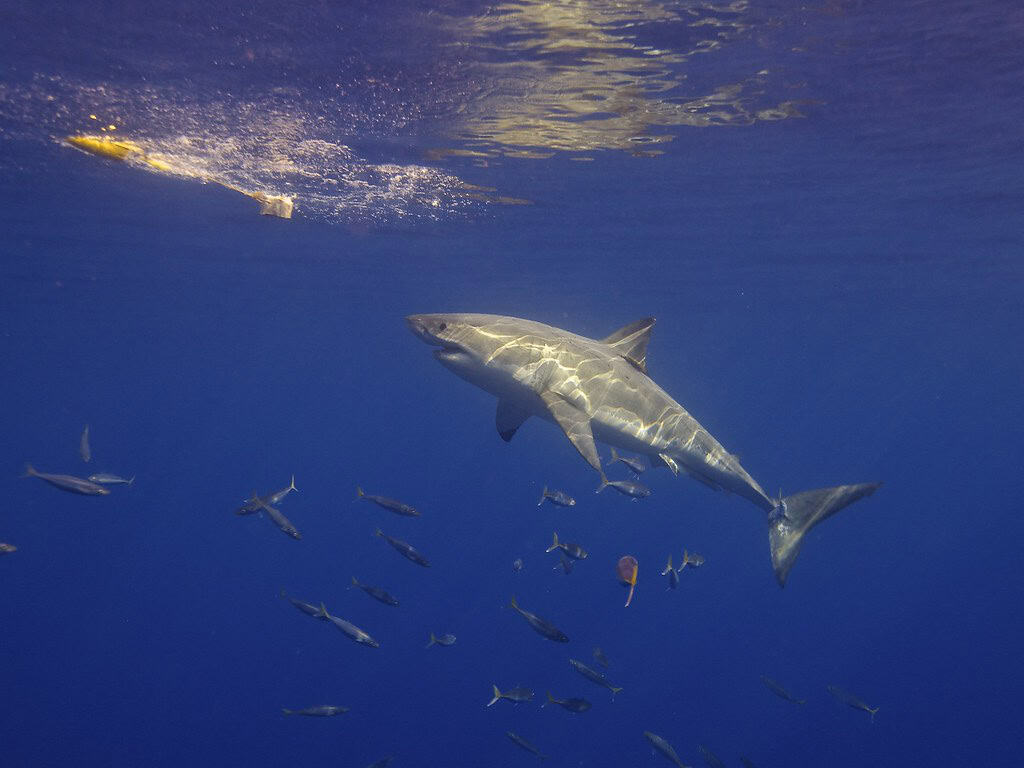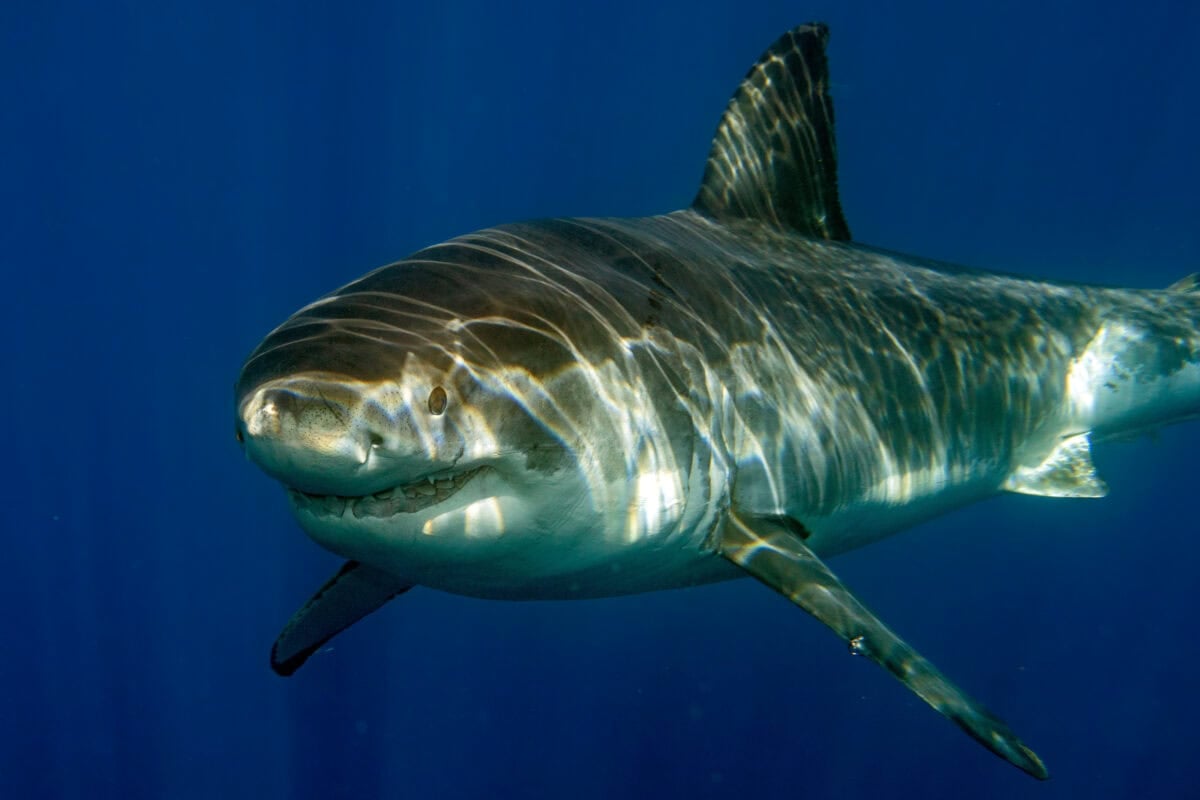Imagine trying to find your dinner in complete darkness—no flashlight, no night vision goggles, not even the faint glow of moonlight to guide you. This is the reality sharks face when hunting in murky waters, where visibility can be reduced to mere inches or even zero. Coastal areas, estuaries, and river mouths are often filled with sediment, plankton, and organic matter that scatter light and create a visual soup nearly impossible to navigate by sight alone.
Yet sharks are remarkably successful predators in these challenging environments. A hammerhead shark can detect a stingray buried under sand, and a bull shark can effectively hunt in the silt-laden waters of rivers. Their secret weapon? A highly sophisticated sixth sense called electroreception, which allows them to detect minute electrical fields produced by all living organisms. This remarkable ability transforms what would be a hunting disadvantage into a precision targeting system that has helped sharks thrive for over 400 million years.
The Discovery of Electroreception in Sharks

The scientific understanding of shark electroreception began relatively recently in evolutionary terms. In 1935, biologist Sven Dijkgraaf observed that dogfish sharks were attracted to metal forceps in seawater, even when the sharks couldn’t see them. This observation led to curiosity about how sharks might be sensing something beyond the traditional five senses. However, it wasn’t until the 1960s that researchers Adrianus Kalmijn and R.W. Murray began to unravel the mystery, demonstrating conclusively that sharks could detect electrical fields.
Kalmijn’s groundbreaking experiments showed that sharks could find battery-powered electrodes buried in sand, proving they weren’t using sight, smell, or sound to locate the sources. This revelation opened an entirely new field of study in marine biology and changed our understanding of how these apex predators navigate their environment. Scientists have since discovered that this sense is so refined that some shark species can detect electrical fields as weak as 5 nanovolts per centimeter—equivalent to detecting a 1.5-volt battery connected to electrodes 1,000 miles apart.
The Ampullae of Lorenzini: Nature’s Electrical Sensors

The physical structures responsible for electroreception in sharks are called the ampullae of Lorenzini, named after the Italian anatomist who first described them in 1678. These specialized organs appear as small pores dotting the shark’s snout and around its head. Each pore leads to a jelly-filled canal that connects to a bulb-like ampulla containing electroreceptor cells. The number of these ampullae varies by species—hammerhead sharks have approximately 3,000, while great white sharks possess around 2,000.
The jelly inside these canals has a remarkable property: it conducts electricity better than seawater. This conductive gel works as a biological wire, allowing electrical signals to travel from the pores to the sensory cells. When an electrical field is detected, the receptor cells transmit signals to the shark’s brain. The distribution of the ampullae across the shark’s head creates a three-dimensional electrical mapping system, giving the shark precise directional information about the source of the electrical field—much like how our ears provide directional information about sounds.
How Living Organisms Generate Electrical Fields

Every living creature generates weak electrical fields, making them detectable to electroreceptive predators like sharks. These bioelectric fields primarily originate from muscle contractions and nerve impulses. When a fish flexes its gills to breathe or moves its muscles to swim, electrical charges are created through the movement of ions across cell membranes. Even at rest, the normal biological processes of heart beating and neural activity produce a measurable electrical signature that’s as unique as a fingerprint.
Research has shown that different prey species produce distinct electrical patterns. For example, a flounder has a different electrical signature than a stingray. Even animals trying to hide by burying themselves in sand or mud continue to emit these telltale electrical signals. In the underwater world, there’s no such thing as perfect camouflage against an electroreceptive predator. For sharks, these electrical emissions are like neon signs in the darkness, announcing “food here!” even when all other sensory information is obscured.
The Remarkable Sensitivity of Shark Electroreception

The sensitivity of a shark’s electroreceptive system is truly astounding. Scientific measurements have shown that sharks can detect voltage gradients as low as 5 nanovolts per centimeter (5×10^-9 V/cm). To put this in perspective, this would be equivalent to detecting a single AA battery connected to electrodes placed in water on opposite sides of a lake. This extreme sensitivity allows sharks to detect prey animals even when they’re completely hidden from view or when other sensory information is limited.
This sensitivity varies by species, with sharks that regularly hunt in low-visibility environments generally possessing more acute electroreceptive abilities. For instance, the sandbar shark has been shown to respond to electrical fields as weak as 25 nanovolts per centimeter, while the scalloped hammerhead can detect fields of just 4 nanovolts per centimeter. These differences reflect evolutionary adaptations to different hunting strategies and environments, with species that specialize in finding prey hidden in sediment typically having more sensitive electroreception.
Electroreception in Action: The Final Attack Phase

Shark hunting typically occurs in phases, with electroreception playing a crucial role in the final attack sequence. Initially, a shark might detect prey from a distance using its acute sense of smell, which can detect blood or other chemicals at concentrations as low as one part per billion. As the shark draws closer, it may use sound or pressure changes detected by its lateral line system to narrow down the prey’s location. However, in murky water, visual confirmation becomes impossible at close range.
This is where electroreception becomes the primary guidance system. In the final moments before attack, often within a meter of the prey, the shark switches to electroreception for pinpoint accuracy. High-speed camera footage has revealed that many shark species close their eyes just before striking—a protective reflex, but also evidence that they’re not relying on vision for the final attack. Instead, the ampullae of Lorenzini guide them directly to their prey with remarkable precision. This sensory handoff between different systems ensures successful hunting even in zero-visibility conditions.
Specialized Hunting Strategies in Different Shark Species

Different shark species have evolved specialized electroreceptive hunting strategies suited to their ecological niches. The hammerhead shark’s distinctive head shape, called a cephalofoil, spreads its ampullae of Lorenzini over a wider area, creating an expanded electrical detection field. This adaptation is particularly effective for locating stingrays hidden under sand. Studies have shown that hammerheads will swim just above the seafloor, sweeping their heads back and forth like metal detectors, until they detect the electrical signature of a buried ray.
Bottom-dwelling sharks like the nurse shark have concentrated their ampullae on the underside of their snouts, optimizing them for detecting prey in the sediment directly below. Bull sharks, which frequently hunt in murky river systems with near-zero visibility, rely heavily on electroreception to locate prey in these challenging environments. The great white shark combines electroreception with other senses in a different way, using its electrical sense to detect the heartbeat of potential prey, allowing it to determine whether an animal is alive and worth expending energy to attack.
Hunting in the Ocean’s Twilight Zone

Some shark species have taken electroreception to extreme depths, hunting in what scientists call the mesopelagic or “twilight” zone, where sunlight barely penetrates. At depths between 200 and 1,000 meters (650-3,300 feet), visibility is extremely limited even in the clearest water. Species like the cookiecutter shark, goblin shark, and several deep-sea lantern sharks rely heavily on electroreception to locate prey in this perpetually dark environment.
The goblin shark, with its elongated, sensitive snout packed with ampullae, represents an extreme adaptation for electroreceptive hunting. When this bizarre-looking shark detects the electrical field of prey, it can project its jaws forward at astonishing speed in a specialized feeding mechanism called slingshot feeding. Research using deep-sea cameras has revealed that these sharks can accurately locate and capture prey in complete darkness, demonstrating the effectiveness of electroreception as a primary hunting sense in conditions where visibility is permanently compromised.
Counteracting Electroreception: Prey Adaptations

In the evolutionary arms race between predator and prey, some species have developed countermeasures against sharks’ electroreceptive abilities. Certain rays, frequent prey for hammerhead sharks, have evolved the ability to reduce their electrical output when they sense danger. They do this by holding their breath and remaining completely still, which minimizes the electrical fields generated by gill movements and muscle contractions. While not a perfect defense, this behavior can make them less detectable to electroreceptive predators.
Some fish species that live in shark-rich environments have developed body shapes and swimming patterns that minimize their electrical signatures. Torpedo rays and electric eels have taken a different approach, developing powerful electrical organs that can generate fields strong enough to stun predators and overwhelm their sensitive electroreceptors. These defensive adaptations highlight the evolutionary importance of electroreception in predator-prey relationships and demonstrate how this sensory modality has shaped marine life over millions of years.
Human Applications and Biomimicry

The remarkable electroreceptive abilities of sharks have inspired various technological applications. Engineers have developed underwater robots equipped with artificial electroreceptors that mimic the ampullae of Lorenzini. These machines can detect buried objects like underwater mines or cables without disturbing the surrounding environment. The technology has potential applications in marine archaeology, allowing researchers to locate artifacts buried under sediment without destructive excavation.
Medical researchers are studying the unique properties of the ampullary jelly to develop better conductive materials for brain-computer interfaces and other biomedical devices. The military has explored shark-inspired sensor systems for detecting enemy submarines and underwater vessels based on their electrical signatures. Even the renewable energy sector has found applications, with companies developing systems inspired by shark electroreception to monitor the electrical output of underwater turbines. These developments demonstrate how understanding shark sensory systems can lead to innovative solutions to human technological challenges.
Conservation Implications of Electroreception

Understanding shark electroreception has important implications for conservation efforts. Many fishing methods, particularly those using metal hooks or electrical shark deterrents, inadvertently exploit sharks’ electroreceptive abilities. Metal objects in seawater create weak electrical fields that can attract sharks rather than repel them. This knowledge has led to the development of modified fishing gear designed to be less attractive to sharks, helping to reduce accidental bycatch in commercial fishing operations.
Scientists are also using this knowledge to develop more effective shark protection technologies. Some newer shark deterrent devices create electrical fields specifically designed to overwhelm or disrupt the ampullae of Lorenzini, making the wearer effectively “invisible” to the shark’s electrical sense or creating an unpleasant sensation that repels sharks without harming them. As shark populations worldwide face increasing threats, these applications of electroreception research may play a crucial role in developing sustainable fishing practices and promoting human-shark coexistence.
The Evolutionary Marvel of Shark Electroreception

The electroreceptive system of sharks represents one of nature’s most remarkable sensory adaptations, allowing these ancient predators to thrive in conditions where other hunters would be at a severe disadvantage. Sharks have been utilizing this sixth sense for hunting in murky waters for over 400 million years, long before dinosaurs walked the Earth. The persistence of this adaptation throughout evolutionary history speaks to its extraordinary effectiveness as a hunting mechanism in challenging aquatic environments.
What makes shark electroreception particularly fascinating is how it transforms what would normally be a hunting disadvantage—poor visibility—into a specialized niche. While most predators struggle in murky conditions, sharks excel, using their unique sensory capabilities to detect prey that would otherwise remain hidden. This sensory innovation has contributed significantly to sharks’ evolutionary success and their position as apex predators in marine ecosystems worldwide. As we continue to study and understand this remarkable sense, we gain not only scientific knowledge but also a deeper appreciation for the sophisticated biological systems that have evolved in our oceans.
- How Sharks Use Electroreception to Hunt in Murky Water - August 12, 2025
- How Rhinos Use Their Horns (It’s for More Than Defense) - August 12, 2025
- 11 Animals That Can Recognize Themselves in a Mirror - August 12, 2025

